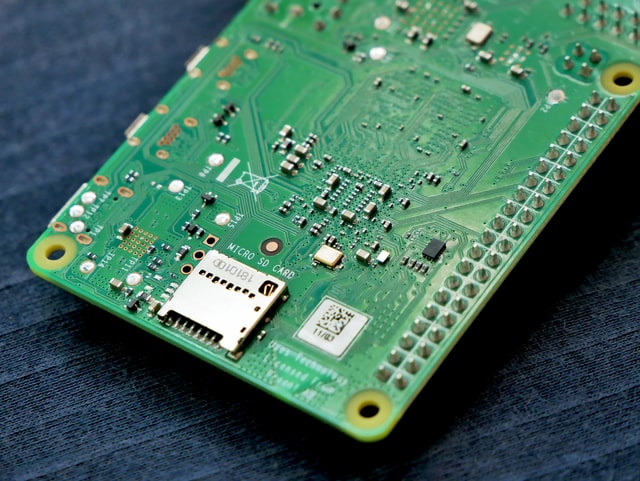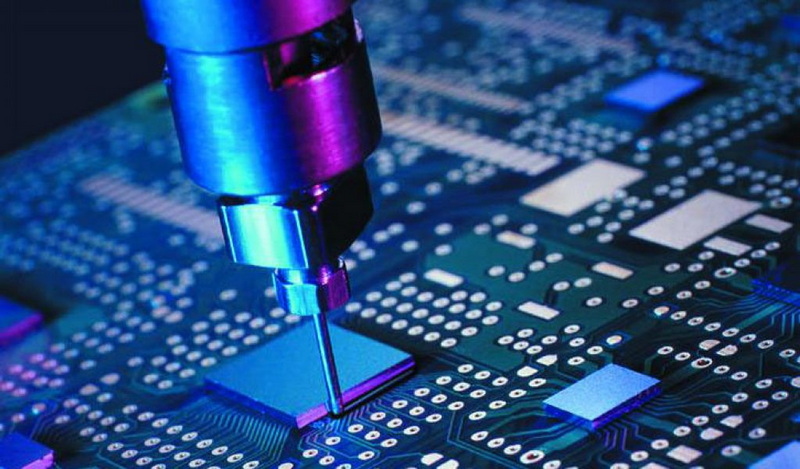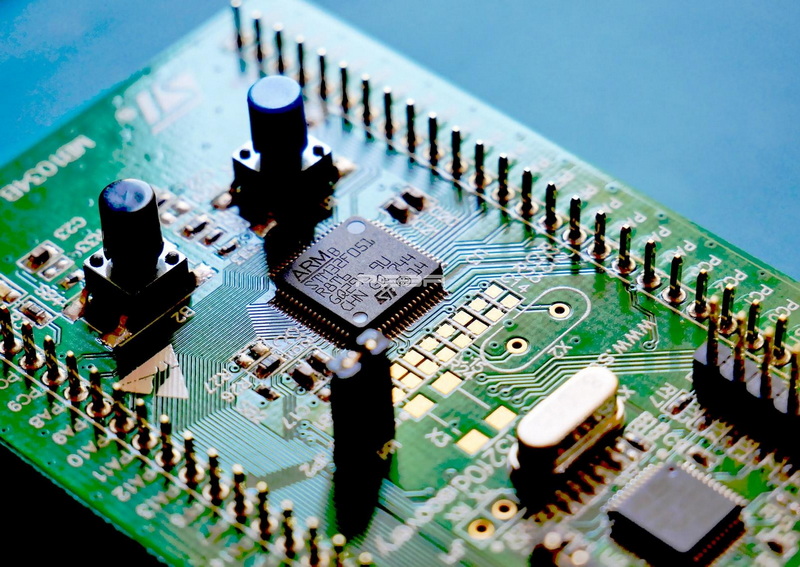Content Menu
>> Understanding SMT Stencils
>> Importance of SMT Stencils
>> Types of SMT Stencils
>> Manufacturing Process of SMT Stencils
>> Materials Used in SMT Stencil Manufacturing
>> Key Functions of SMT Stencils
>> Applications of SMT Stencils
>> Challenges in Using SMT Stencils
>> Best Practices for Using SMT Stencils
>> Future Trends in SMT Stencil Technology
>> Stencil Printing Process
● Conclusion
● FAQ
>> 1. What materials are used to make SMT stencils?
>> 2. How do I clean an SMT stencil?
>> 3. What is the difference between laser-cut and etched stencils?
>> 4. Can I use an SMT stencil multiple times?
>> 5. What factors should I consider when choosing an SMT stencil?
● Citations:
Surface Mount Technology (SMT) has revolutionized the electronics manufacturing industry by allowing for the efficient placement of components on printed circuit boards (PCBs). A critical component in the SMT process is the SMT stencil, which plays a vital role in ensuring the accurate application of solder paste. This article will explore what an SMT stencil is, its types, applications, manufacturing processes, and its significance in the SMT assembly process.

Understanding SMT Stencils
An SMT stencil is a thin sheet made from materials like stainless steel or polymer, featuring precise openings that correspond to the pads on a PCB where solder paste needs to be applied. The stencil is used to transfer solder paste onto the PCB in a controlled manner, ensuring that each pad receives the correct amount of solder for optimal component attachment.
Importance of SMT Stencils
The importance of SMT stencils cannot be overstated. They ensure:
- Precision: The openings in the stencil are designed to match the pads on the PCB with high accuracy, allowing for precise solder paste application.
- Consistency: Using stencils helps maintain uniformity across multiple PCBs, which is crucial for mass production.
- Efficiency: Stencils speed up the solder paste application process compared to manual methods, reducing production time.
- Quality: Properly applied solder paste leads to better solder joints and reduces defects during assembly.
Types of SMT Stencils
There are several types of SMT stencils, each suited for different applications and production needs:
- Laser-Cut Stencils: These are made using laser technology, allowing for high precision and fine details. They are ideal for complex designs with small pads.
- Etched Stencils: Created by chemically etching metal sheets, these stencils are durable and can be used for high-volume production runs.
- Milled Stencils: These stencils are produced by mechanically milling a metal sheet. They are less common but can be beneficial for specific applications requiring thicker materials.
- Polymer Stencils: Made from flexible materials, these stencils are lightweight and suitable for low-volume production or prototyping.
Manufacturing Process of SMT Stencils
The manufacturing process of SMT stencils involves several steps:
1. Designing the Stencil: The first step is to create a design based on the PCB layout. This design includes the dimensions and locations of all pads where solder paste will be applied.
2. Material Selection: Choosing the right material is crucial. Stainless steel is commonly used for its durability, while polymer materials may be chosen for flexibility and ease of handling.
3. Cutting or Etching: Depending on the type of stencil being produced, various methods such as laser cutting or chemical etching are employed to create openings in the material.
4. Finishing Touches: After cutting or etching, the stencil may undergo additional processes such as cleaning and coating to enhance its performance and longevity.
5. Quality Control: Finally, each stencil undergoes rigorous quality checks to ensure that it meets design specifications and standards.
Materials Used in SMT Stencil Manufacturing
The choice of materials significantly affects the performance and longevity of SMT stencils. Common materials include:
- Stainless Steel: Known for its durability, corrosion resistance, and thermal stability, stainless steel stencils endure multiple printing cycles without deformation. Stainless steel alloys like 300 series offer excellent mechanical properties suitable for various applications.
- Nickel Alloys: Stencils made from nickel alloys such as Inconel or Monel provide high-temperature resistance and mechanical strength. These alloys ensure consistent performance under demanding conditions, making them ideal for environments like aerospace or automotive applications where reliability is critical.
Key Functions of SMT Stencils
SMT stencils serve several essential functions in PCB assembly:
- Solder Paste Deposition: They enable precise application of solder paste onto PCB pads, ensuring that each component receives the correct amount of solder.
- Consistency: Stencils help maintain uniformity in solder paste volume across multiple PCBs, reducing defects and improving overall product quality.
- Efficiency: Automating the solder paste application process with stencils saves time compared to manual methods.

Applications of SMT Stencils
SMT stencils are primarily used in electronics manufacturing but have applications across various sectors:
- Consumer Electronics: Extensively used in smartphones, tablets, and other consumer devices where compact design is essential.
- Automotive Electronics: Critical for assembling components in vehicles that require high reliability and performance.
- Medical Devices: Used in manufacturing medical equipment where precision and quality are paramount due to safety concerns.
- Industrial Equipment: Applied in various industrial applications where electronic controls are integrated into machinery.
Challenges in Using SMT Stencils
Despite their benefits, there are challenges associated with using SMT stencils:
- Alignment Issues: Misalignment during the application process can lead to inadequate solder paste deposition, resulting in poor connections.
- Wear and Tear: Over time, stencils can wear out or become damaged, necessitating replacements or repairs which can disrupt production schedules.
- Cleaning Requirements: After multiple uses, stencils need to be cleaned properly to avoid contamination that could affect solder quality.
Best Practices for Using SMT Stencils
To maximize efficiency and quality when using SMT stencils, consider these best practices:
- Proper Alignment: Ensure accurate alignment between the stencil and PCB before applying solder paste to avoid misapplication.
- Regular Maintenance: Implement a routine maintenance schedule for cleaning and inspecting stencils to prolong their lifespan.
- Use Appropriate Solder Paste: Choose solder paste that matches the specifications required for your components and PCB design.
- Monitor Environmental Conditions: Maintain appropriate humidity levels during storage and use of stencils to prevent warping or degradation of materials.
Future Trends in SMT Stencil Technology
As technology evolves, so does the manufacturing process of SMT stencils. Future trends may include:
- Automation Integration: Increased use of automated systems for stencil alignment and solder paste application could enhance efficiency further.
- Advanced Materials: Development of new materials that offer better durability and flexibility may lead to improvements in stencil performance.
- 3D Printing Technology: The potential use of 3D printing technology could revolutionize how stencils are created, allowing for rapid prototyping and customization based on specific needs.
Stencil Printing Process
The stencil printing process is a critical step in SMT assembly as it directly affects the quality of solder joints:
1. Solder Paste Selection: Choosing suitable solder paste is essential for optimal printing results. Factors such as alloy composition, particle size distribution, flux type, viscosity, and compatibility with both stencil material and PCB surface finish must be considered.
2. Squeegee Selection: The squeegee forces solder paste through stencil apertures onto PCB pads. Key considerations include material (metal or polymer), hardness/durability, blade profile (straight or curved), and compatibility with both solder paste and stencil material.
3. Printing Technique: Utilizing proper printing techniques ensures even pressure across the stencil while applying solder paste. This uniformity helps achieve consistent deposits across all pads on a PCB.
4. Post-print Inspection: Automated optical inspection systems validate paste application accuracy after printing to detect defects such as insufficient transfer or bridging between pads.
5. Reflow Soldering Process: The printed PCB then undergoes reflow soldering where heat melts the solder paste creating permanent joints between components and pads on the board as flux residues evaporate away during this phase.
Conclusion
In conclusion, SMT stencils are an indispensable part of modern electronics manufacturing. They facilitate precise solder paste application essential for assembling reliable electronic devices. Understanding their types, manufacturing processes, applications, challenges, and best practices can significantly enhance production efficiency and product quality. As technology continues to advance, we can expect further innovations in stencil design and usage that will continue to support the growing demands of electronics manufacturing.

FAQ
1. What materials are used to make SMT stencils?
SMT stencils are typically made from stainless steel or polymer materials. Stainless steel offers durability while polymers provide flexibility suitable for low-volume production.
2. How do I clean an SMT stencil?
To clean an SMT stencil effectively, use a suitable solvent or cleaning solution designed for electronics manufacturing. It's important to avoid abrasive materials that could damage the stencil's surface.
3. What is the difference between laser-cut and etched stencils?
Laser-cut stencils offer higher precision with finer details compared to etched stencils which are more durable but may not achieve as fine detail due to their manufacturing process.
4. Can I use an SMT stencil multiple times?
Yes, SMT stencils can be reused multiple times; however, they require proper cleaning after each use to prevent contamination that could affect solder quality.
5. What factors should I consider when choosing an SMT stencil?
When choosing an SMT stencil, consider factors such as material type (stainless steel vs polymer), thickness required for your application, precision needed based on pad size, and whether you need flexibility for low-volume runs or durability for high-volume production.
Citations:
[1] https://jlcpcb.com/blog/guide-to-smt-stencils-in-pcb-assembly
[2] https://rigidflexpcb.org/comprehensive-guide-to-smt-stencils/
[3] https://www.twistedtraces.com/blog/understanding-smt-stencils-the-backbone-of-electronics-manufacturing
[4] https://github.com/Gomati12/MRI/blob/main/Electroform-SMT-Stencil-Market-Size-And-Forecast:-Trends,-Insights,-and-Growth-Projections-for-2024-2031.md
[5] https://www.pcb-hero.com/blogs/lisas-column/surface-mount-technology-common-problems-and-solutions-for-efficient-smt-assembly
[6] https://www.stencilsunlimited.com/blog/stencil-manufacturing-technologies/
[7] https://smartsmttools.com/thicknessofsmtstencils/
[8] https://www.elepcb.com/blog/pcb-stencil-smt-assembly/
[9] https://blueringstencils.com/top-5-smt-industry-trends-for-2019/
[10] https://www.raypcb.com/what-is-smt-stencil/




















